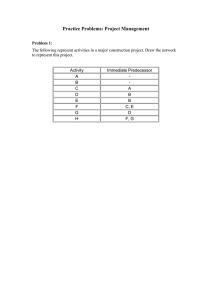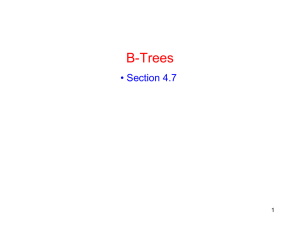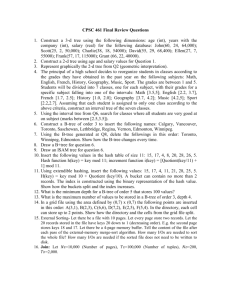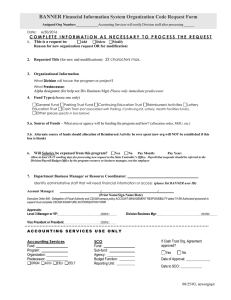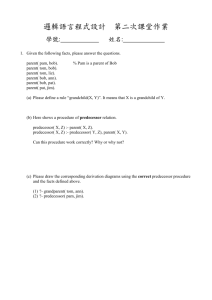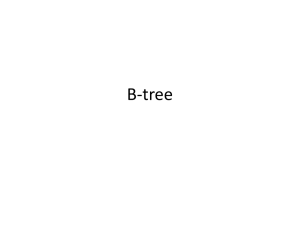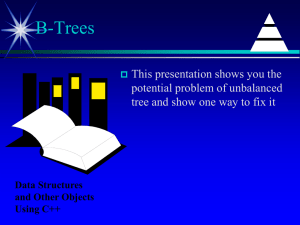HW #2
advertisement
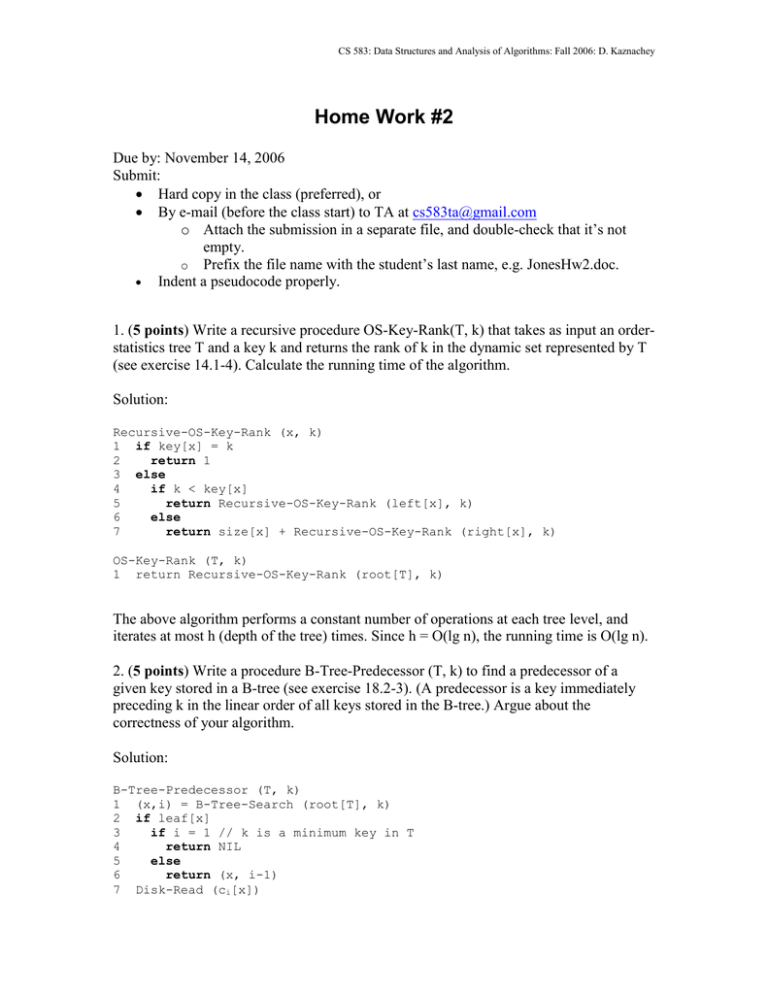
CS 583: Data Structures and Analysis of Algorithms: Fall 2006: D. Kaznachey Home Work #2 Due by: November 14, 2006 Submit: Hard copy in the class (preferred), or By e-mail (before the class start) to TA at cs583ta@gmail.com o Attach the submission in a separate file, and double-check that it’s not empty. o Prefix the file name with the student’s last name, e.g. JonesHw2.doc. Indent a pseudocode properly. 1. (5 points) Write a recursive procedure OS-Key-Rank(T, k) that takes as input an orderstatistics tree T and a key k and returns the rank of k in the dynamic set represented by T (see exercise 14.1-4). Calculate the running time of the algorithm. Solution: Recursive-OS-Key-Rank (x, k) 1 if key[x] = k 2 return 1 3 else 4 if k < key[x] 5 return Recursive-OS-Key-Rank (left[x], k) 6 else 7 return size[x] + Recursive-OS-Key-Rank (right[x], k) OS-Key-Rank (T, k) 1 return Recursive-OS-Key-Rank (root[T], k) The above algorithm performs a constant number of operations at each tree level, and iterates at most h (depth of the tree) times. Since h = O(lg n), the running time is O(lg n). 2. (5 points) Write a procedure B-Tree-Predecessor (T, k) to find a predecessor of a given key stored in a B-tree (see exercise 18.2-3). (A predecessor is a key immediately preceding k in the linear order of all keys stored in the B-tree.) Argue about the correctness of your algorithm. Solution: B-Tree-Predecessor (T, k) 1 (x,i) = B-Tree-Search (root[T], k) 2 if leaf[x] 3 if i = 1 // k is a minimum key in T 4 return NIL 5 else 6 return (x, i-1) 7 Disk-Read (ci[x]) CS 583: Data Structures and Analysis of Algorithms: Fall 2006: D. Kaznachey 8 return B-Tree-Maximum (ci[x]) // Find the maximum key in a subtree x B-Tree-Maximum (x) 1 if leaf[x] 2 return (x, n[x]) 3 Disk-Read (cn[x]+1[x]) 4 return B-Tree-Maximum (cn[x]+1[x]) The correctness of the above algorithm can be argued as follows. Consider a node x with key k as follows: keyi-1 <= k <= keyi+1 The predecessor p of k cannot be located in the previous (parent) level: o p <= k <= p* since ki-1 >= p by B-tree definition. Hence p(k) is located between ki-1 and k, and can be retrieved by getting the maximum key at the subtree rooted at x. 3. (Bonus 1 point) Prove the following formula (see exercise C.1-7) (ki) = (k-1i) + (k-1i-1) Solution: When choosing i elements from k, we first consider choosing i elements from (k-1). When adding an additional element k* we need to only add combinations of k* with (i-1) elements from (k-1). This gives the above formula.
